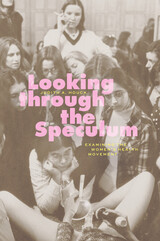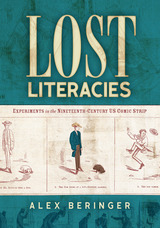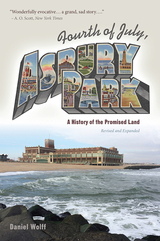
Fourth of July, Asbury Park tells the tale of the city’s first 150 years, guiding us through the development of its lavish amusement parks and bandstands, as well as the decay of its working-class neighborhoods and spread of its racially-segregated ghettos. Featuring exclusive interviews with Springsteen and other prominent Asbury Park residents, Daniel Wolff uncovers the history of how this Jersey shore resort town came to epitomize both the promises of the American dream and the tragic consequences when those promises are broken.
Hailed by The New York Times as a “wonderfully evocative…grand, sad story” when first published in 2006, this revised and expanded edition considers how Asbury Park has changed in the twenty-first century, experiencing both gentrification and new forms of segregation.
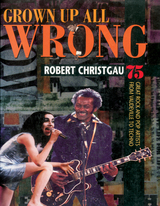
Two generations of American music lovers have grown up listening with Robert Christgau, attuned to his inimitable blend of judgment, acuity, passion, erudition, wit, and caveat emptor. His writings, collected here, constitute a virtual encyclopedia of popular music over the past fifty years. Whether honoring the originators of rock and roll, celebrating established artists, or spreading the word about newer ones, the book is pure enjoyment, a pleasure that takes its cues from the sounds it chronicles.
A critical compendium of points of interest in American popular music and its far-flung diaspora, this book ranges from the 1950s singer-songwriter tradition through hip-hop, alternative, and beyond. With unfailing style and grace, Christgau negotiates the straits of great music and thorny politics, as in the cases of Public Enemy, blackface artist Emmett Miller, KRS-One, the Beastie Boys, and Lynyrd Skynyrd. He illuminates legends from pop music and the beginnings of rock and roll—George Gershwin, Nat King Cole, B. B. King, Chuck Berry, and Elvis Presley—and looks at the subtle transition to just plain “rock” in the music of Janis Joplin, the Rolling Stones, Eric Clapton, Aretha Franklin, James Brown, and others. He praises the endless vitality of Al Green, George Clinton, and Neil Young. And from the Rolling Stones to Sonic Youth to Nirvana, from Bette Midler to Michael Jackson to DJ Shadow, he shows how money calls the tune in careers that aren’t necessarily compromised by their intercourse with commerce.
Rock and punk and hip-hop, pop and world beat: this is the music of the second half of the twentieth century, skillfully framed in the work of a writer whose reach, insight, and perfect pitch make him one of the major cultural critics of our time.
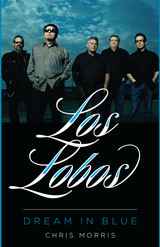
Los Lobos leaped into the national spotlight in 1987, when their cover of “La Bamba” became a No. 1 hit. But what looked like an overnight achievement to the band’s new fans was actually a way station in a long musical journey that began in East Los Angeles in 1973 and is still going strong. Across four decades, Los Lobos (Cesar Rosas, Conrad Lozano, David Hidalgo, Louie Pérez, and Steve Berlin) have ranged through virtually the entire breadth of American vernacular music, from rockabilly to primal punk rock, R&B to country and folk, Mexican son jarocho to Tex-Mex conjunto and Latin American cumbia. Their sui generis sound has sold millions of albums and won acclaim from fans and critics alike, including three Grammy Awards.
Los Lobos, the first book on this unique band, traces the entire arc of the band’s career. Music journalist Chris Morris draws on new interviews with Los Lobos members and their principal collaborators, as well as his own reporting since the early 1980s, to recount the evolution of Los Lobos’s music. He describes the creation of every album, lingering over highlights such as How Will the Wolf Survive?, La Pistola y El Corazon, and Kiko, while following the band’s trajectory from playing Mexican folk music at weddings and dances in East L.A. to international stardom and major-label success, as well as their independent work in the new millennium. Giving one of the longest-lived and most-honored American rock bands its due, Los Lobos celebrates the expansive reach and creative experimentalism that few other bands can match.
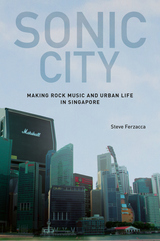
Grounded in debates from sound studies, Ferzacca draws on Bruno Latour’s ideas of the social—continually emergent, constantly in-the-making, “associations of heterogeneous elements” of human and non-human “mediators and intermediaries”—to portray a community entangled in the confounding relations between vernacular and national heritage projects. Music shops, music gear, music genres, sound, urban space, neighborhoods, State presence, performance venues, practice spaces, regional travel, local, national, regional, and sonic histories afford expected and unexpected opportunities for work, play, and meaning, in the contemporary music scene in this Southeast Asian city-state. The emergent quality of this deep sound is fiercely cosmopolitan, yet entirely Singaporean. What emerges is a vernacular heritage drawing upon Singapore’s unique place in Southeast Asian and world history.
READERS
Browse our collection.
PUBLISHERS
See BiblioVault's publisher services.
STUDENT SERVICES
Files for college accessibility offices.
UChicago Accessibility Resources
home | accessibility | search | about | contact us
BiblioVault ® 2001 - 2024
The University of Chicago Press


